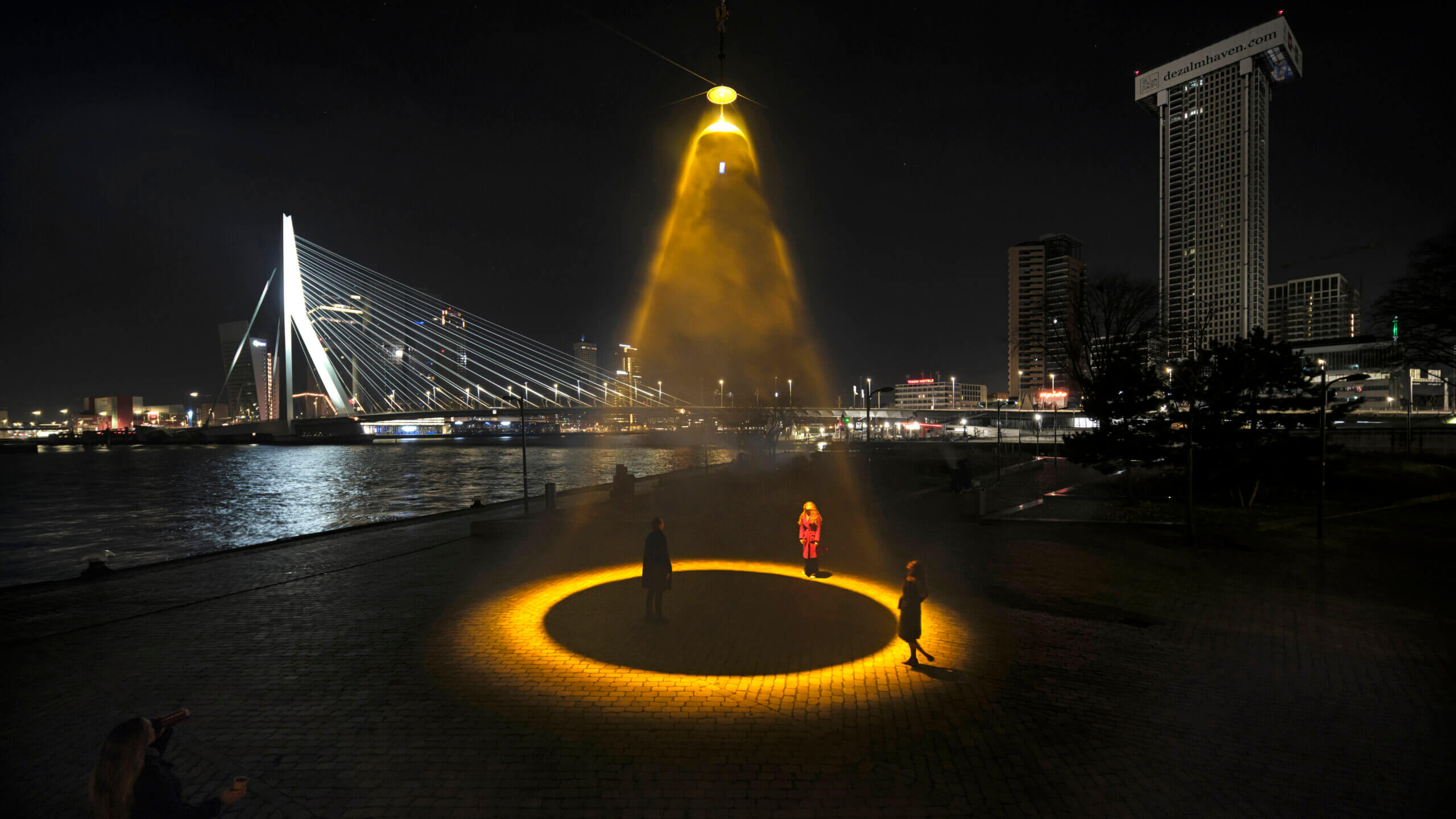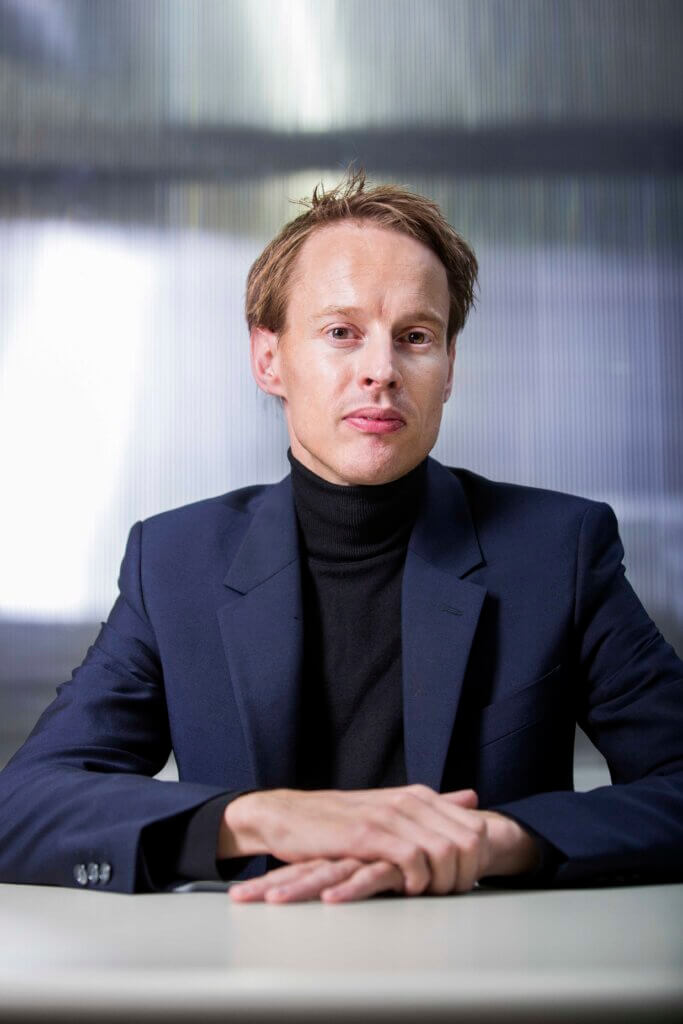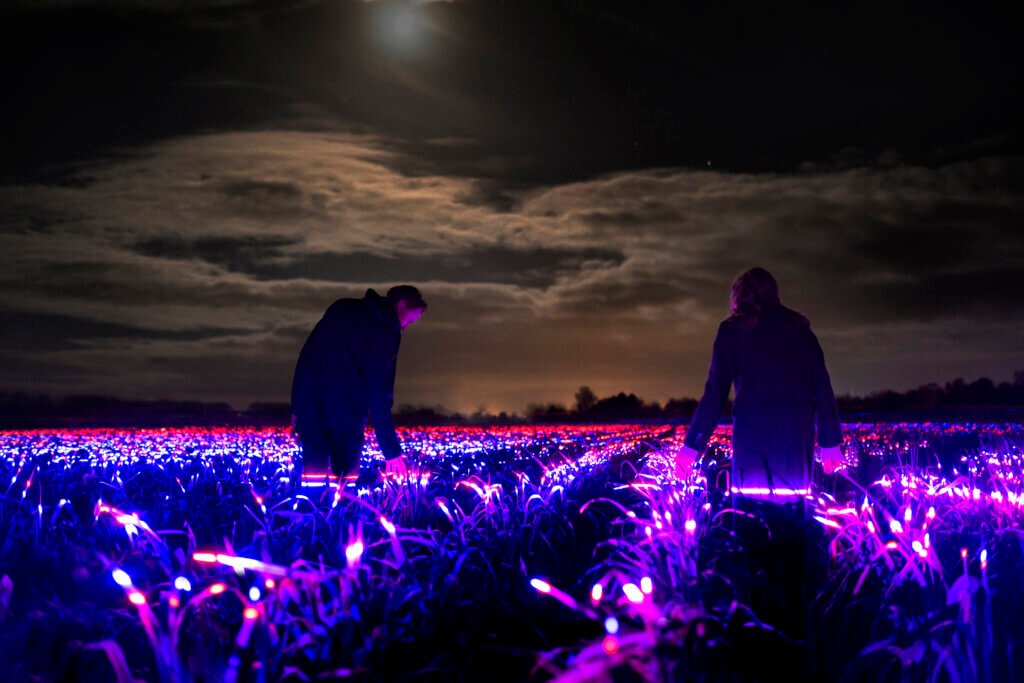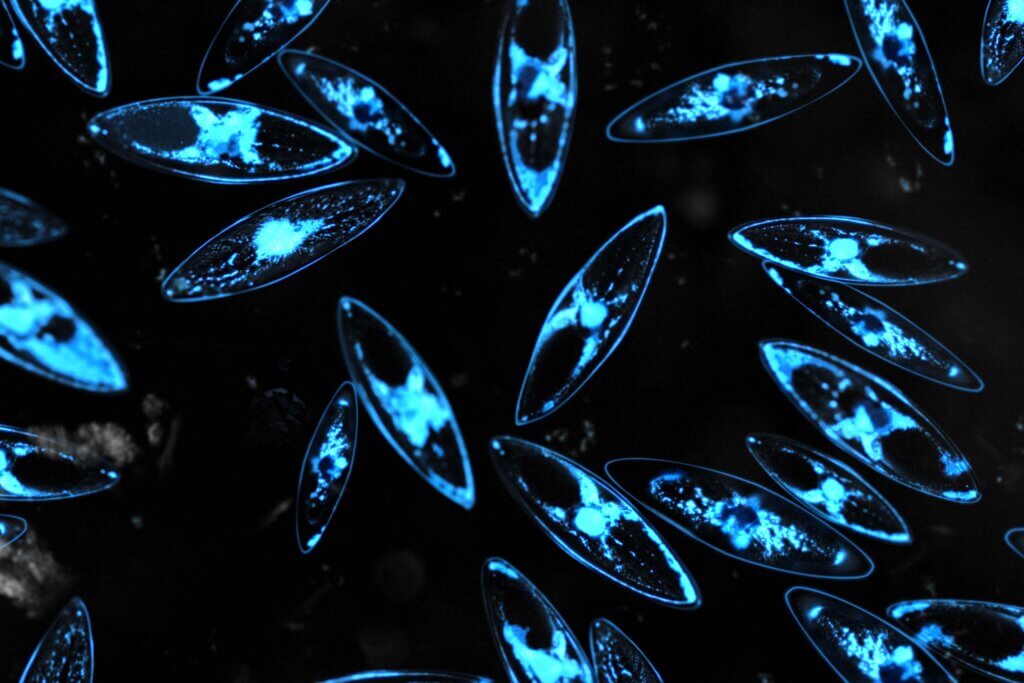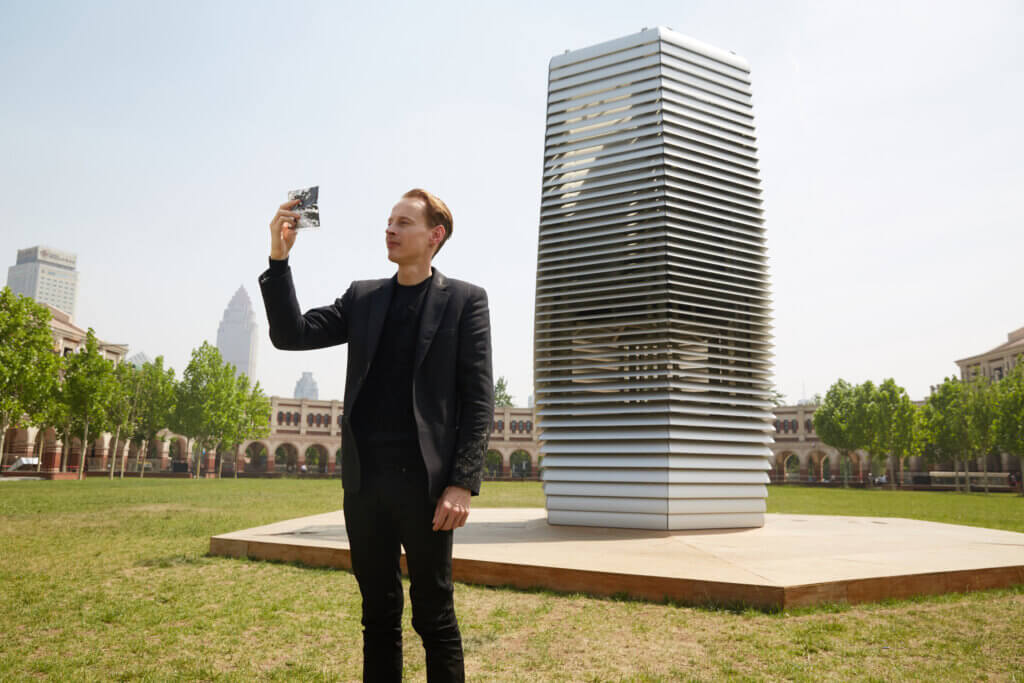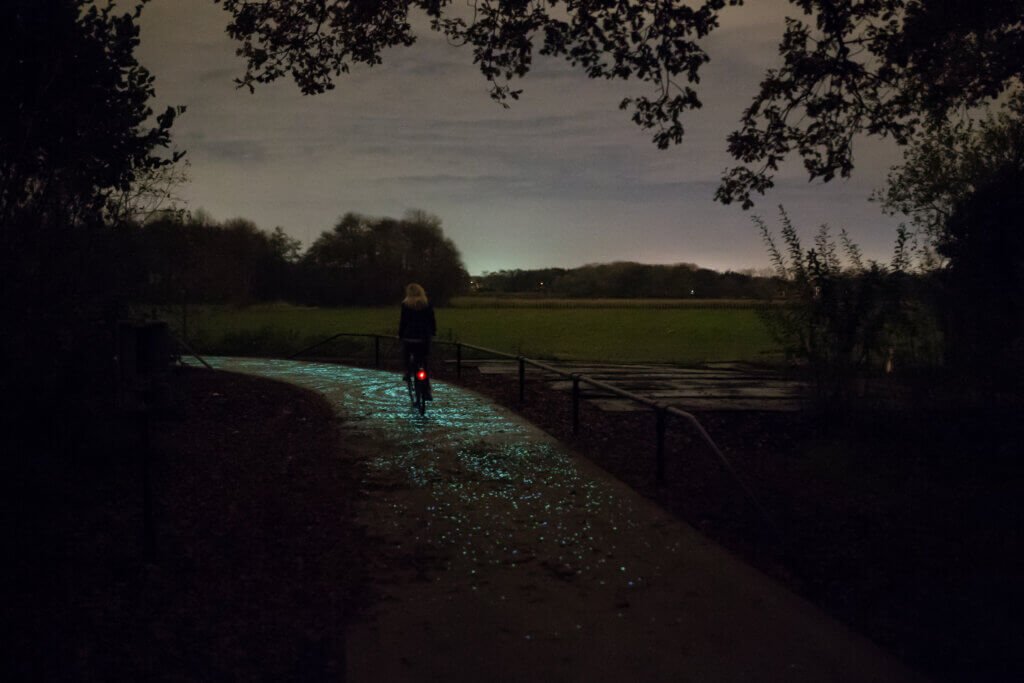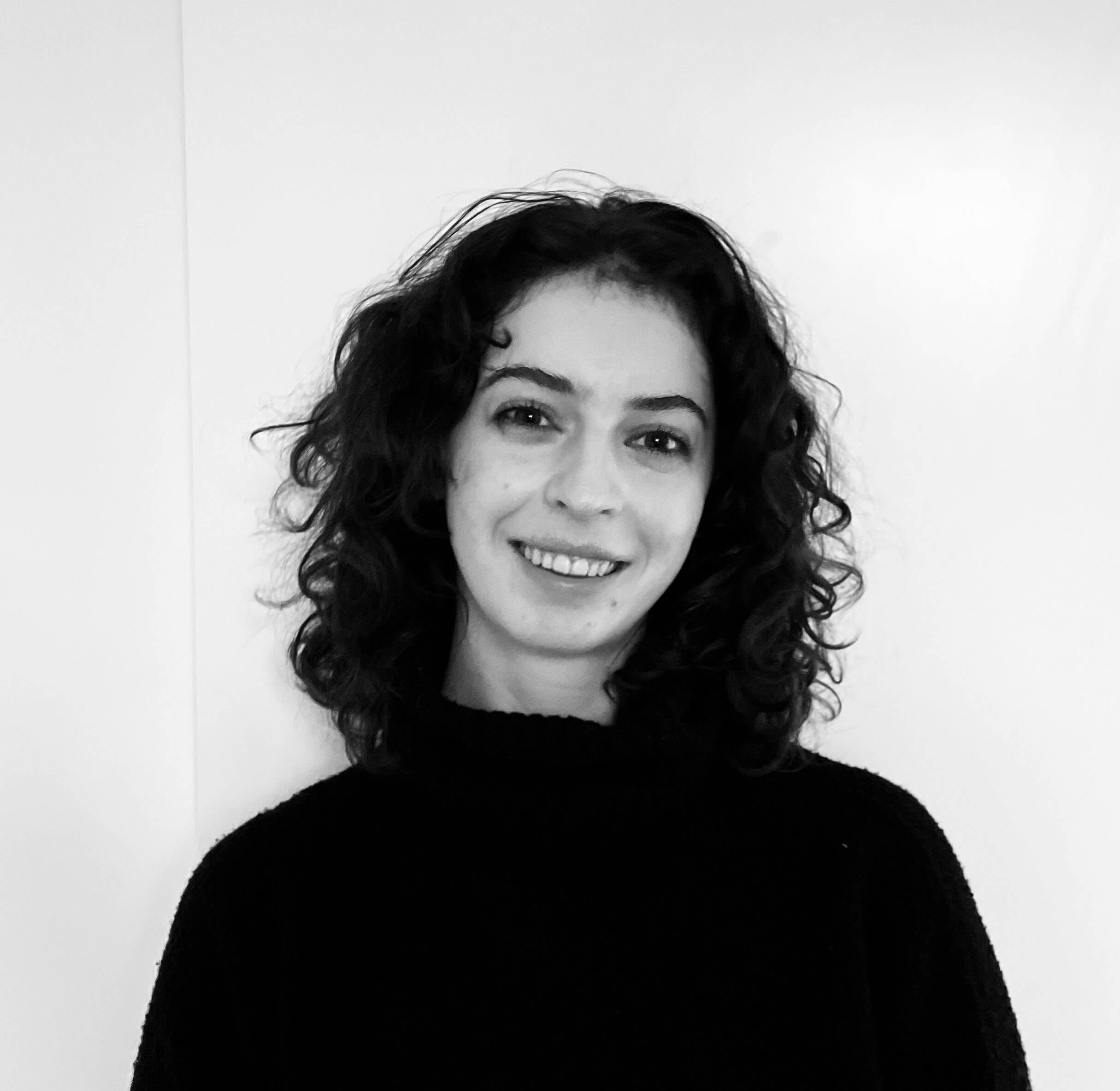Daan Roosegaarde, a Dutch artist, conceives designs that bridge the gap between art, technology, public space, and social change. His most recent project, ‘Urban Sun’, uses UV light to sanitise coronavirus from public spaces and project hope in a worldwide crisis. The project has been acclaimed by leading scientists, public authorities, and global media including the BBC, Yahoo, and Reuters.
Embracing transformation and change is key to my creative ingenuity. New projects are spurred at times by personal inspirations and, at other times, by irritations.
Daan Roosegarde
From sustainable dancefloors that generate their own electricity, to smog-capturing devices, to a virtual flood of light, Roosegaarde is concerned with visualising and inducing change within our urban landscape to create the cities of tomorrow.
Q: Could you briefly introduce yourself and your projects to our readers?
Daan Roosegaarde: I am Daan Roosegaarde, a Dutch artist, innovator and maker of social designs which explore the relation between people, technology and space. I have been driven by nature’s gifts such as light-emitting fireflies and jellyfishes since an early age. My fascination for nature and technology is reflected in my iconic designs such as GROW (highlighting the beauty of agriculture) and Urban Sun (cleans public spaces of coronavirus to bring well-being).
In 2007 I founded Studio Roosegaarde, a social design studio built in an old glass factory and I also call it the ‘Dream Factory’. I work here with my team of designers and engineers towards a better future. Together we develop ‘Landscapes of the Future’ and build smart sustainable prototypes for the cities of tomorrow.
Q: What, in your opinion, is the importance of art in mitigating the effects of climate change?
Daan Roosegaarde: As a boy living in the Netherlands I was always surrounded by water. We live below sea-level so without design and technology we would drown. But we don’t because of this genius system of dikes and water management. This was my motivation to get involved in creating art about climate change. So to find harmony between people and landscape is very normal to me. We have to learn from nature, we have to adapt. That is now an universal topic.
There is this Dutch word “Schoonheid” which has 2 meanings; beauty and creativity, but also clarity or cleanness as in clean air, clean water, clean energy. For me these are the future values of our society. And only if we make this part of our new standard we can evolve. I think we live in a world where there is not a lack of technology but of imagination of how we want the future to look like. And if we can’t imagine the future, we won’t get there. That is why we are stuck right now, because we are afraid of the unknown.
That is why projects such as GROW or Urban Sun are there, to visualize and activate people about our changing world and become part of the solution, not just feel part of the problem. For the projects are prototypes for the city of tomorrow, bicycles paths (van Gogh path) which charge at day-time via the sun and glow at night, clean air towers (SMOG FREE TOWER), light emitting algae as new public lights (GLOWING NATURE), smog free rings purchased by wedding couples. They are proposals for how I would like to see the world. Not as an utopia, but as a protopia (term by Kevin Kelly), to show, to learn, to fail, to upgrade the world around us.
Q: Art is often considered to be a very personal creative process. How does the presence of a team affect the planning and outcome of your artistic projects?
Daan Roosegaarde: Embracing transformation and change is key to my creative ingenuity. New projects are spurred at times by personal inspirations and, at other times, by irritations. I embrace both and turn irritations into solutions. Typical of this solution-driven attitude is the success of the ‘Smog Free Project’, we developed towers to clean the air from pollution and make jewellery with its filtrates.
Undertaking projects of this scale requires an expansive, collaborative approach to creative practice. Each new project compels detailed research before artist impressions and prototypes can be made. The aesthetic qualities of our high end artwork undertaken by me and my team of designers, engineers and experts, are the result of the many decisions and choices made throughout the extensive collaborative design process. Personal credit matters less and less, and it’s more about, bringing proposals to the table.
Not like in the past where it was all about prideful men boasting about their own solutions. I learned that when I was at Pixar, the animation firm, they taught me that: “Plus me.” If someone has a new idea for a movie, this person goes to someone else – from accountant, junior designer, to a CEO – and says: ‘here, try to make it better’. Plus it. And they do that eighty-five times per day. I try to do this as well.
Q: Are you optimistic about the future of climate action? Why, or why not?
Daan Roosegaarde: With climate change debates raging and environmental policy growing evermore topical in political campaigns both locally and abroad, it would be easy to see a political connection in my work, but there’s not a political agenda. I see myself more as an activator to inspire people, to make them curious about the future, to make them feel more connected with the world around them. I innovate and this means that I try to remain faithful to my dreams. – Be curious, don’t be scared and don’t wait for someone else to fix it. Observe the world with amazement and belief that everything is possible. – People won’t change because of facts or numbers, but if we can trigger their imagination, that’s the way to activate people. Our designs need to harness creative thinking, to stimulate the imagination of a new world and to provide practical solutions to smart and sustainable cities. If we all would be curious and caring for the climate and our future, we could do a lot better.
Q: How do you begin the concept and preparation of a project?
Daan Roosegaarde: At the studio projects mostly start in two ways. Either we are fascinated by something, or we are annoyed, irritated by something. From this irritation comes inspiration, if I look outside my window. I do not understand society anymore, it is very confusing: traffic jams, air pollution, rising water levels, CO2 emissions. So I can do 2 things; complain, hide in a room and blame somebody else or I can say; well we have created this situation, let’s design, let’s design our way out of it. In that way, I feel like an activist, but not with signs shouting on the streets, but as an activator; showing the beauty and the potential of a sustainable society. It’s not about inspiration but frustration. My ideas come from irritation with why the world is the way it is.
Other sources of inspiration come from nature, as fireflies or light of the sun. Our latest project was Urban Sun, inspired by the powerful light of the sun, which supports all life on Earth. We dreamt about an Urban Sun, floating above our cities and could help to enhance our well-being. Our world suddenly became filled with plastic barriers, warning stickers and social distancing. I asked myself‘ how we could clean our cities of the coronavirus?”. I wondered if light could help to restore safer encounters in public spaces, and I remembered reading about a wavelength of far-UVC light at 222nm that can kill viruses, while remaining safe for humans and animals. So Urban Sun began.
Q: Your social designs explore the relation between people, technology, and space. In your opinion, what is most important about the placing of art in public spaces, and how has this been affected by the pandemic over the last year?
Daan Roosegaarde: The pandemic has shown that you can have all the money in the world, but if you’re sick or can’t meet your friends, you’re still not happy. I think true beauty, true luxury is not a Louis Vuitton bag or a Ferrari, but the knowledge that you have clean air, clean water or clean energy. I also think the role of technology is really important.
Right now we are feeding computer screens with our hopes, our dreams, our desires, and what do we get back in return? A “like” – that’s a bad deal, so we will renegotiate our deal with the computers, with the machines, where technology helps us to inform, to feed, to suggest, to explore. So, I think it’s a shift of values and a shift of control. With these values in mind, we focus on the here and now. My designs create futuristic landscapes, which delve into ideas of storytelling through responsive and interactive public spaces. The designs connect people and technology in artworks that improve daily life in urban environments, spark imagination and fight the climate crisis. I want to stimulate curiosity and activate people.
Q: What are your thoughts on the interaction of art and technology?
Daan Roosegaarde: We use design and technology to improve daily life in urban environments, spark imagination and fight social and environmental issues like the global climate crisis.
Q: Finally, what do you hope people will gain from viewing or interacting with your designs?
Daan Roosegaarde: I think with a project I can show the beauty of a potential sustainable future and trigger curiosity. I think that’s the main job and you’re right, sometimes we do insides although even as a boy I always liked outside, always played outside, not inside, so we like inside, but I feel outside you can even relate even more with nature, with rain, with winds, with people who don’t expect it, so therefore we love to create designs for public spaces.
©2021 Daan Roosegarde, studioroosegaarde.net


